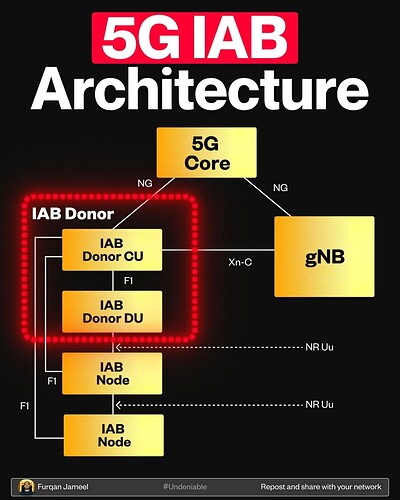5G promises ultra-fast speeds and low latency.
But deploying dense networks is expensive.
Traditional fiber backhaul is costly.
It’s slow to install.
It’s hard to scale.
This is where IAB (Integrated Access and Backhaul) is helpful.
Instead of relying on fiber, IAB uses 5G itself for backhaul.
Small cells relay data wirelessly.
This means less fiber and more flexibility.
It has some key components
![]() IAB Donor CU:
IAB Donor CU:
Handles control-plane and user-plane functions.
![]() IAB Donor DU:
IAB Donor DU:
Manages lower-layer functions…
![]() IAB Node:
IAB Node:
A relay that extends 5G coverage without fiber.
![]() NR Uu and F1 Interfaces:
NR Uu and F1 Interfaces:
Enable communication between nodes and the core network.
IAB makes it possible to deploy 5G where fiber is impractical.
But, there are some challenges.
![]() Wireless links can be affected by congestion.
Wireless links can be affected by congestion.
![]() Multi-hop relays introduce delays.
Multi-hop relays introduce delays.
![]() Requires careful management.
Requires careful management.
So, wireless backhaul sounds great.
But, it’s not a silver bullet.
Fiber remains the gold standard for high-capacity networks.
However, IAB provides a flexible alternative where fiber is not feasible.
Thanks for reading.
LinkedIn: ![]()
